The disaster was the deadliest avalanche in Italy in almost 100 years.
On Tuesday victims’ relatives, local residents and representatives of the authorities and emergency services said prayers, read poems and laid flowers outside the remains of the hotel as part of a commemoration day.
“Never again”, read a display showing the portraits of those killed – some working at the Hotel Rigopiano and some simply holidaying there.
“We have been fighting for five years to give justice to our angels and to ensure that what happened in Rigopiano never happens again”, the victims’ committee said in a note shared with Italian media.
VIDEO: How Italian firefighters reached avalanche survivors
After years of investigations and multiple delays, victims’ families now hope 2022 could be the year those deemed responsible are brought to justice.
30 people will face an array of charges including manslaughter, possible negligence leading to injury and death, and illegal construction.
The defendants include hotel representatives, provincial and regional government officials. mayors, a police chief, and officials from the prefecture, which is responsible for disaster prevention and management, news agency Ansa reports.
The trial begins in Pescara on January 28th.
What happened?
A combination of heavy snowfall and seismic activity in the Abruzzo region is thought to have caused the avalanche. The snow slide weighed 120,000 tonnes and hit the Hotel Rigopiano with a speed of around 100km/h – a force equivalent to 4,000 trucks.
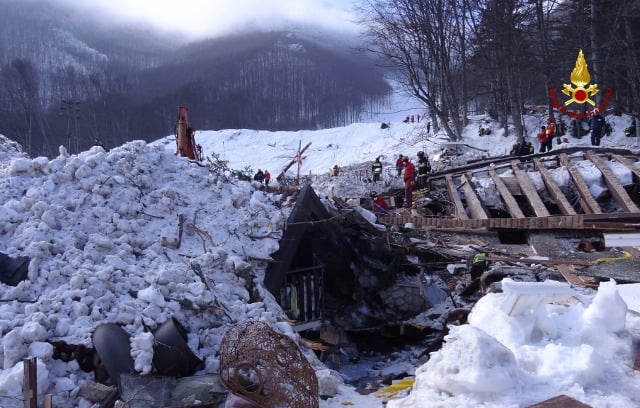
Firefighters at work in the wreckage. Photo: Vigili del Fuoco
The four-storey hotel was ripped from its foundations and collapsed almost entirely, with only the cellars and spa left intact. Many of the victims had been gathered in the hotel lobby awaiting evacuation at the time of the disaster.
When the first rescuers arrived at the scene, they said that the hotel was “no longer there”.
How did the rescue take place?
Alpine rescue crews were mobilized in nearby Farindola almost two hours after the first call to emergency services, with several reports accusing authorities of not taking initial reports seriously enough.
The eight-kilometre road to the resort was blocked by about two meters of snow, and was not cleared until a day later. Rescuers instead reached the site on skis, on foot and by helicopter, and used spades to dig through the snow.
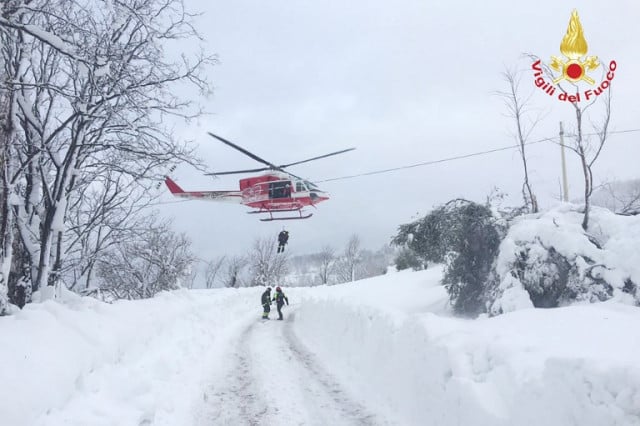
Photo: Vigili del Fuoco/AFP
Hundreds of people from the emergency services, Civil Protection and alpine rescue worked round the clock until all survivors and bodies had been recovered. Volunteers, including a group of asylum seekers, joined the gruelling rescue effort.
Rescue teams later won an award for their use of technology and drones in the search, which helped save time by identifying spots where people might be trapped, by tracking body heat, phone signals and other data.
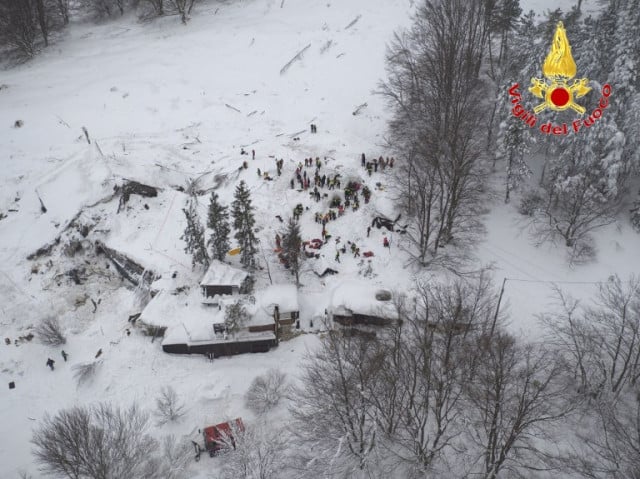
Photo: Vigili del Fuoco/AFP
Who were the victims?
A total of 29 people died in the avalanche, with autopsies revealing that all but two of them died of impact rather than hypothermia. Coroners said that at least one of the victims, 29-year-old hotel waiter Gabriele D’Angelo, could have survived had he been reached by rescuers within two hours.
The final bodies were not recovered until a week after the snowslide, and the Italian fire service’s head of emergency and rescue said it was “one of the most complex operations we have ever managed.”
The victims included 18 hotel guests and 11 employees.
A further six people died in connection with the extreme weather in the area in January 2017 when an emergency services helicopter crashed. That number included two of the rescuers who had helped in the Rigopiano search effort.
Who were the survivors?
There were 11 survivors, including two guests who were not inside the hotel when the avalanche hit: the hotel’s maintenance man Fabio Salzetta and chef Giampiero Parete, who had left the building to get headache pills for his wife.
After two days of rescue efforts in exceptionally harsh conditions, rescuers made contact with a group of six survivors in an air pocket and a mother and her young son were the first to be pulled to safety. One of the officers who reached the group said the survivors “looked like they had been reborn”.
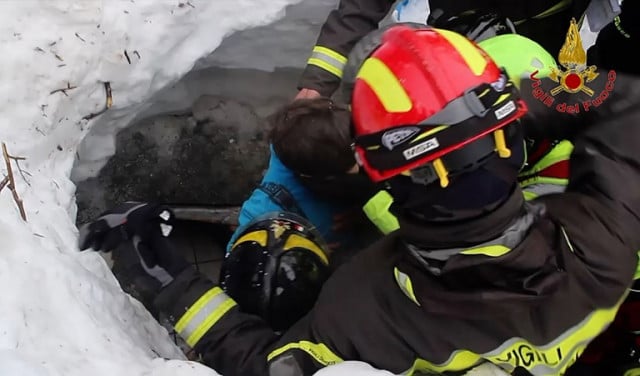
Photo: Vigili del Fuoco/AFP
In total nine people, including four children, were pulled out alive. Parete’s wife, Adriana, and their two children, Gianfilippo, 7, and Ludovica, 6, were among those saved. The family has since written a book about their experience, saying they spent much of the past year struggling to believe they were still alive.
Two other children, Edoardo, 9, and Samuel, 7, were rescued, though each lost both their parents in the tragedy.
Georgia Galassi, 22, and her boyfriend Vincenzo Forti, 25, survived. Galassi said her first words to the rescuers – “I’m Georgia, and I’m alive” – was the “most beautiful thing I’ve ever said”.
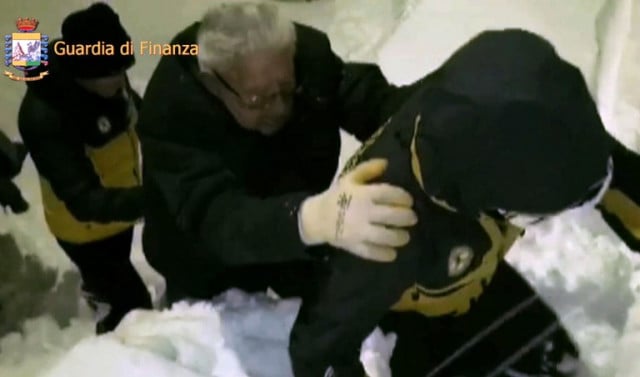
Photo: Guardia di Finanza/AFP
The final two survivors were 34-year-old Giampaolo Matrone and 25-year-old Francesca Bronzi, whose partners died.
Five days after the avalanche, three puppies were found alive under the rubble. The dogs had been born just a few weeks earlier to the hotel’s resident dogs, Lupo (Wolf) and Nuvola (Cloud), who had escaped the quake and found shelter in the nearby village of Farindola.
They became a symbol of hope and comfort amid a tragedy felt all over Italy.

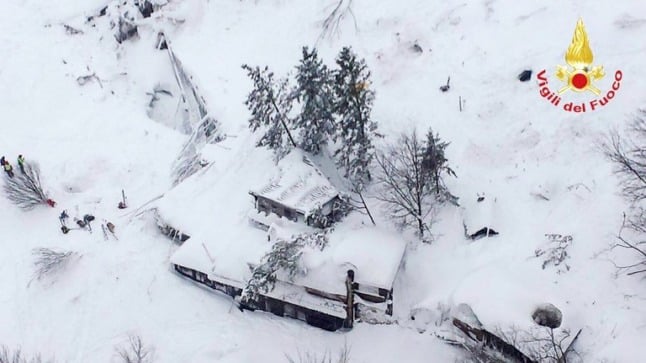
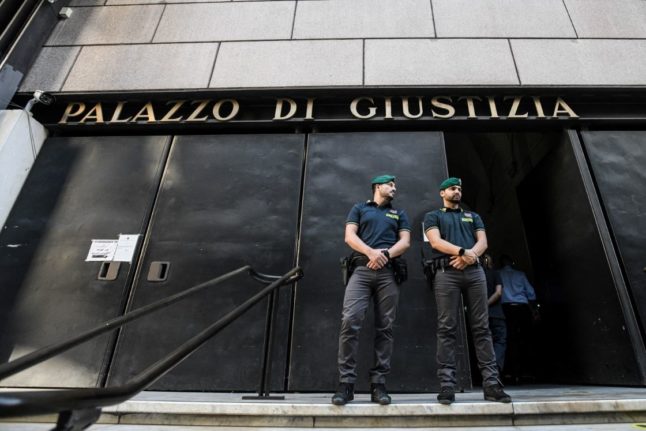
 Please whitelist us to continue reading.
Please whitelist us to continue reading.